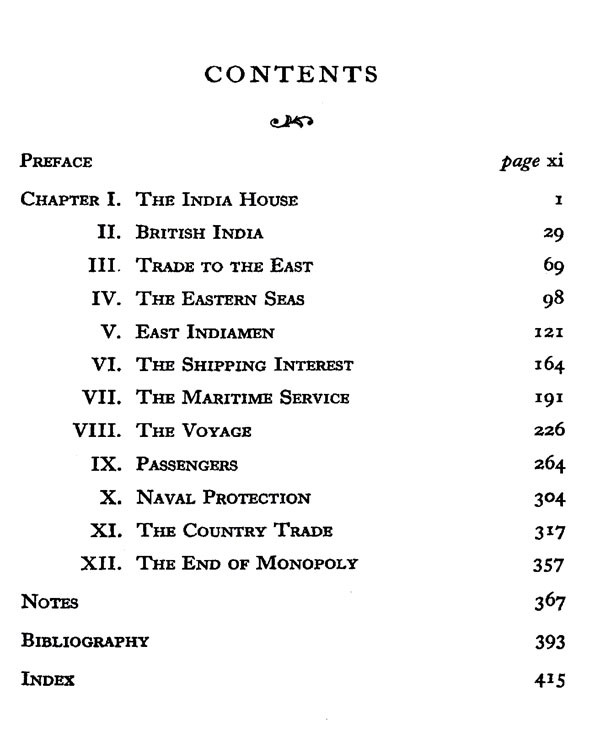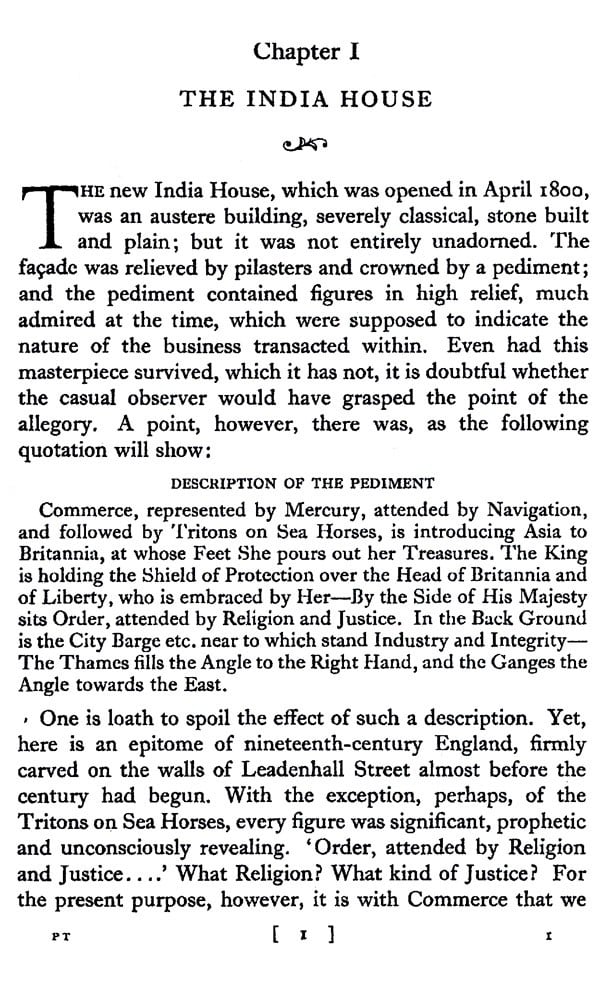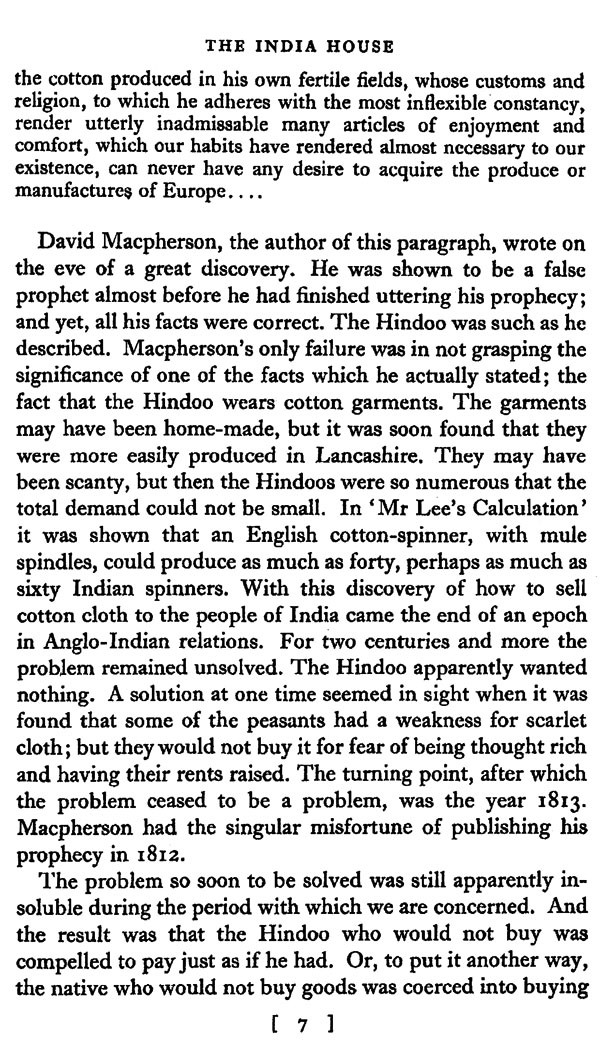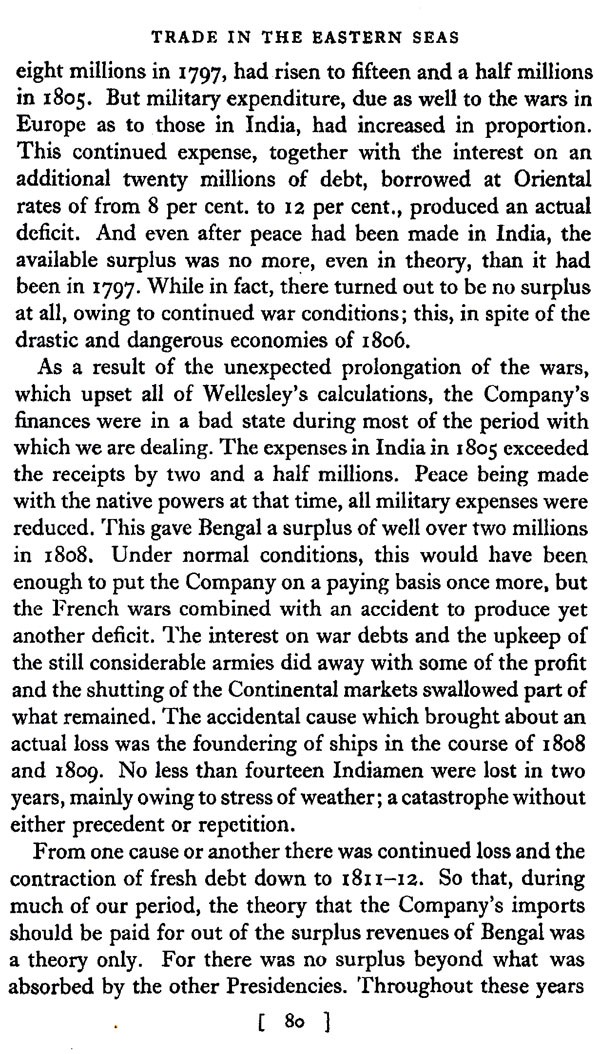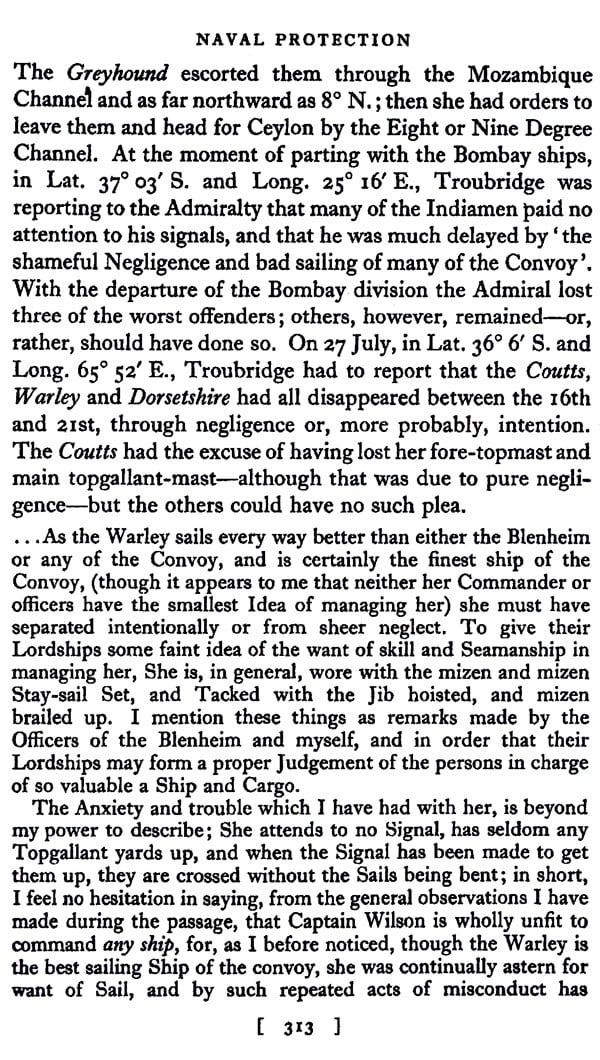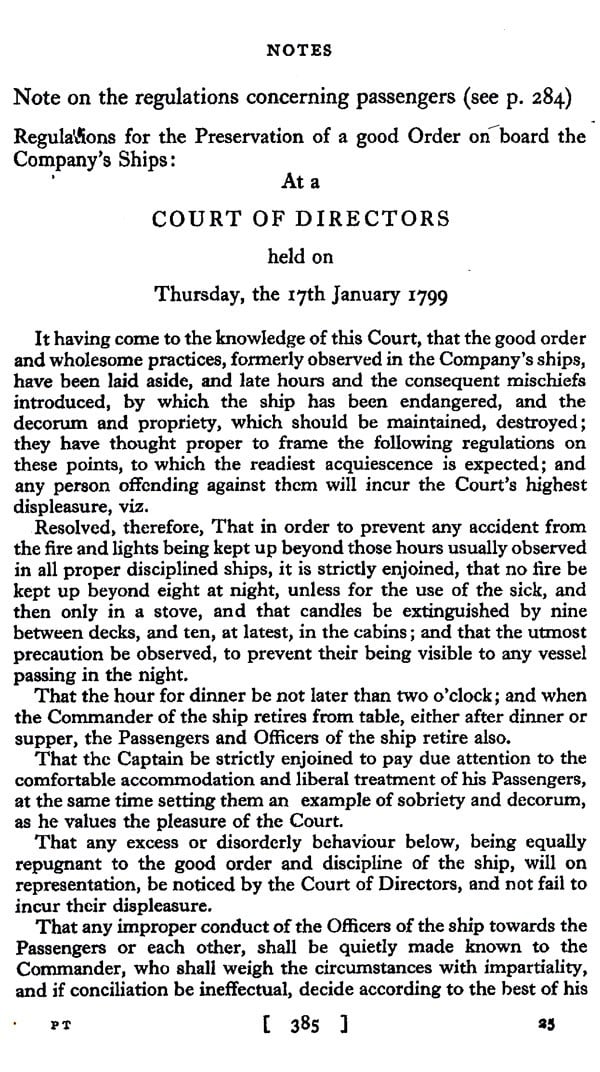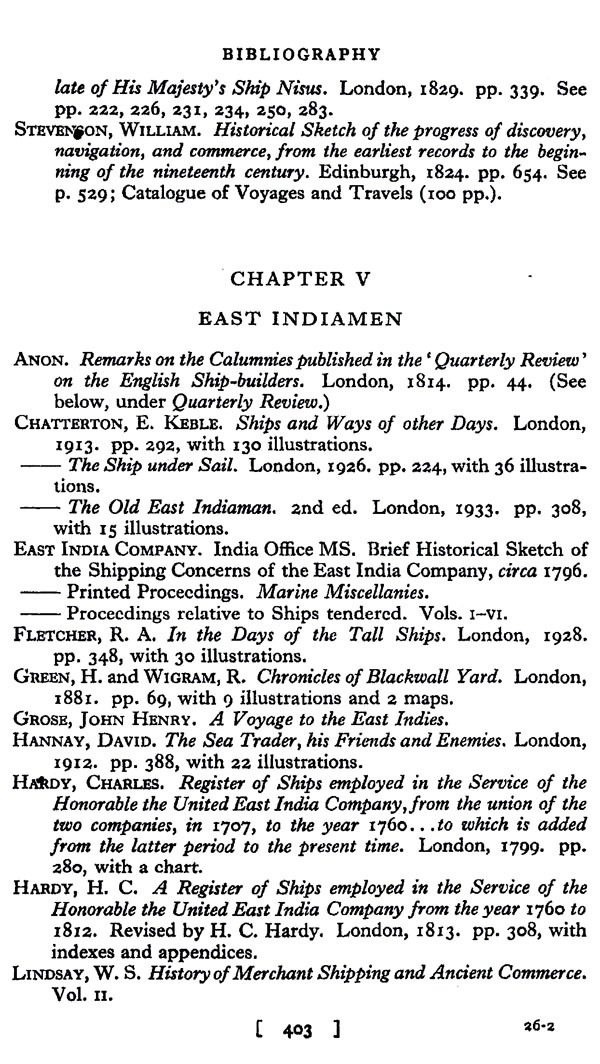
Trade in the Eastern Seas (1793- 1813)
Book Specification
| Item Code: | UBC737 |
| Author: | C. Northcote Parkinson |
| Publisher: | Kalpaz Publications |
| Language: | English |
| Edition: | 2017 |
| ISBN: | 9789351284628 |
| Pages: | 435 |
| Cover: | PAPERBACK |
| Other Details | 8.50 X 5.50 inch |
| Weight | 550 gm |
Book Description
It is my contention that there is much in English history which cannot be understood without its maritime context. It is also my belief that naval history, as now studied, is far too apt to lack its economic background. Were naval history treated as an aspect of maritime history it would itself become more intelligible, while at the same time fitting more easily into the general story of mankind. The object of this work, as originally written, was to describe a naval campaign in what I hold to be its proper historical and geographical setting. Treated thus, the subject became too vast for a single volume, and I decided to deal with it in two separate books, the one maritime and the other strictly naval. The present work is the first of these. The second I hope to write in the near future.
The twofold undertaking, from a part of which this book has developed, was entitled "Trade and War in the Eastern Seas, 1803-1810". It was a thesis submitted to the University of London for the degree of Doctor of Philosophy, and consisted of two distinct parts, the one dealing with trade and the other with war. Only a portion of the first half is here reproduced; and of this the greater part has been re-written. It has also been expanded and lengthened so as to cover the longer period 1793-1813. The epoch chosen is that of the French Wars, omitting the years 1813-1815 on account of the partial abolition in that period of the East India Company's monopoly. Although, however, certain limits are set in point of time, it is necessary to warn the reader that there is here no attempt to chronicle the maritime occurrences of the period so defined. This book is a description of conditions, not a narrative of events.
It will be found that have used no footnotes; and this, to some readers, will prove the unsoundness of any views I may have advanced. To them, my plea must be that footnotes serve but two useful purposes, and that each of these purposes may be achieved in another way. There is the footnote which conveys some additional information; and there is the foot- which refers the reader to some authority. Here the notes of the first type are collected at the end of the book, while those of the second type are concealed in the text itself. laconic, these references are mostly to be under- stood when taken in conjunction with the bibliography, which, for that purpose, is arranged by chapters. Many authorities are quoted in full, so that the most exacting reader has little occasion to verify the context. I have never seen the merit of paraphrasing what might just as well be given in the original words.
Although alone responsible for the many shortcomings of this book, I should like to thank all who have helped me to produce it. First I must express my gratitude to Professor A. P. Newton, of London University, under whose experienced direction my original thesis was written. I am indebted to him for much valuable help, and not least for his suggesting the title. No pupil of his could be in any doubt as to how much I must necessarily owe to his scholarly guidance. At the same time, I have a debt of older standing to Mr E. Welbourne, of Emmanuel College. Such knowledge as I have I owe mainly to him. It is my hope that Mr Welbourne himself will not refuse to acknowledge this book as the offspring, however unworthy, of his own most stimulating thought. I also wish to express my gratitude to Sir Herbert Richmond, Master of Downing College, for much valuable criticism; to Mr J. C. Lockhart for his advice; and to Mr Carrington and Mr Kendon, of the University Press, for their unfailing tact and patience. To the Council of the Navy Records Society I am indebted for permission to reproduce certain passages from their publications. I cannot thank individually all those, particularly among the staffs of the India Office and the British Museum, who have been of assistance to me; but I cannot refrain from thanking Mr M. S. Robinson of the National Maritime Museum for kindly helping me with the illustrations. Like a great many students of naval history, I am already deeply in his debt.
**Contents and Sample Pages**

